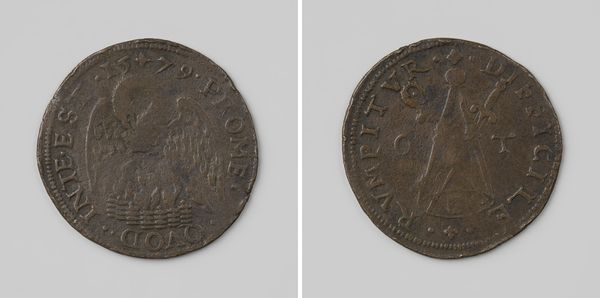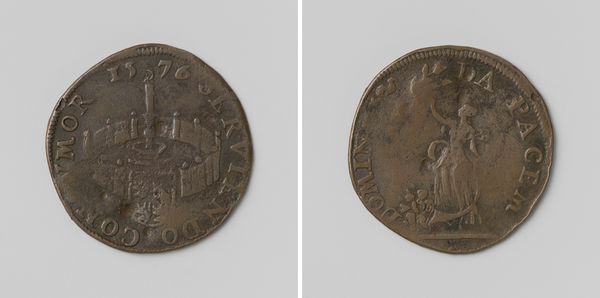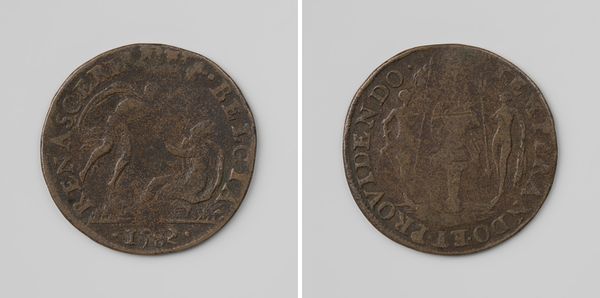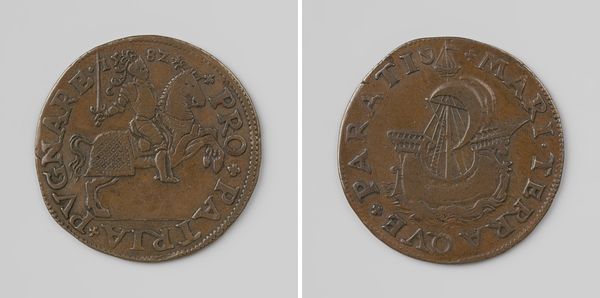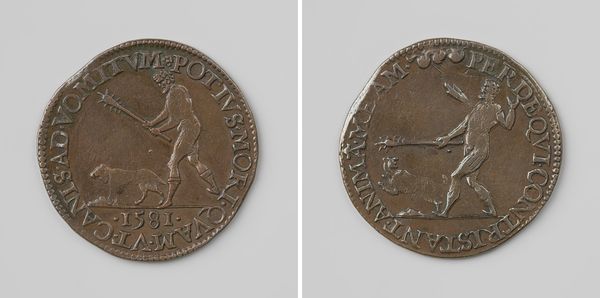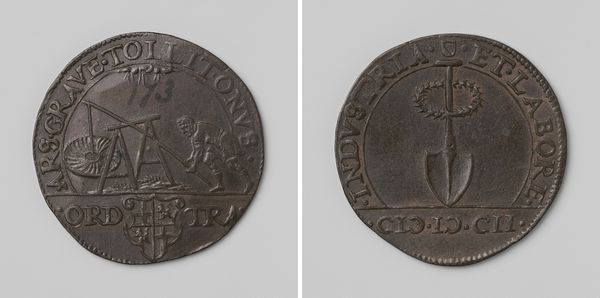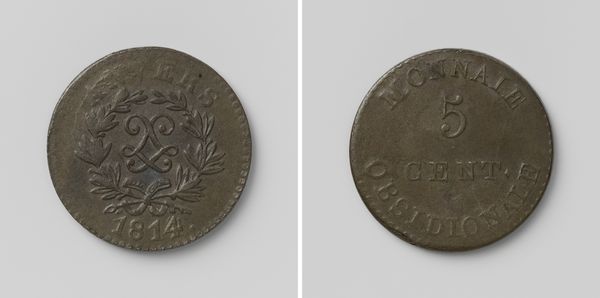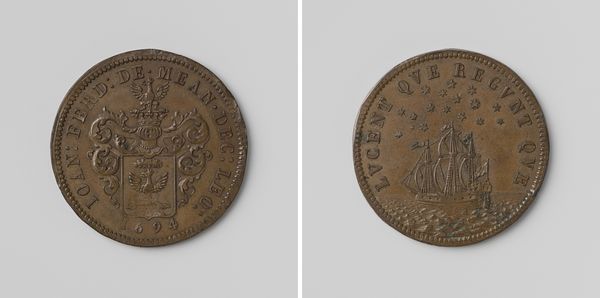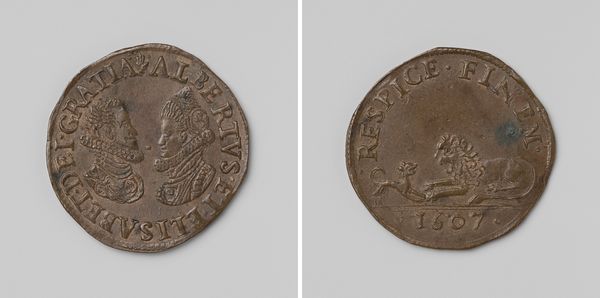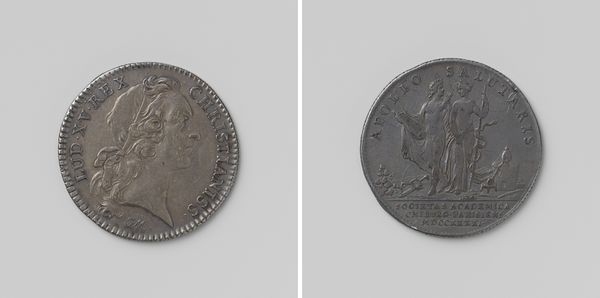
carving, metal, relief, bronze
#
portrait
#
neoclacissism
#
carving
#
metal
#
sculpture
#
relief
#
classical-realism
#
bronze
#
classicism
#
carved
#
history-painting
#
academic-art
#
decorative-art
#
miniature
Dimensions: diameter 3.1 cm, weight 15.27 gr
Copyright: Rijks Museum: Open Domain
Curator: Jacques Roëttiers' bronze relief, “Treaty of Versailles between Austria and France,” created in 1756, presents two distinct yet intertwined faces of diplomacy. Editor: My immediate impression is one of restrained power. There’s an almost archaic formality to it, isn't there? Very…buttoned up. Curator: Indeed. Consider the careful balance achieved through the symmetry. On one face, a heraldic crest dominates, encircled by Latin inscriptions. Observe the meticulous detail in the crown and lion rampant, emblems of power and lineage, aren't they? Editor: Of course. And turning to the other side, the figures representing Austria and France, rendered in classical garb, extend their hands over what looks to be the globe, visually negotiating their concord. Yet, even in peace, one can sense the presence of past conflict and, inevitably, future tensions in their body language. What concessions were made? Curator: It's intriguing to contemplate that semiotic tension. Roëttiers employs classical realism to idealize a political accord. Note the lines of their robes, each fold purposefully rendered. What of it do you make? Editor: I think this artistic strategy of idealizing the treaty veils the complex negotiation process itself. After all, who really benefits when empires broker peace? Did this ‘Concordia Austriae et Galliae’, as the inscription states, translate into real improvements in everyday lives? Or were those gains strictly for the monarchy? Curator: An interesting point! The formal qualities undeniably uphold established notions of authority and order. Perhaps it functions more as a symbolic affirmation of dynastic power than a document celebrating social progress. Editor: Yes, because the actual impact of any treaty always remains subject to who holds the figurative pen. Viewing it as a reflection of its time reminds us of the stratified social structures inherent within such ‘agreements.’ Curator: Roëttiers’ craftsmanship is indisputable; this piece functions effectively as a symbol of its era through considered visual arrangement. Editor: By interrogating its symbolism, we can begin to reveal narratives often submerged beneath the shiny veneer of statecraft.
Comments
No comments
Be the first to comment and join the conversation on the ultimate creative platform.
